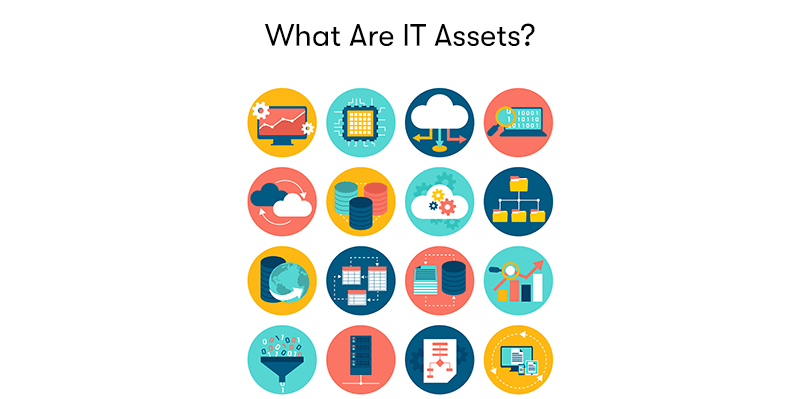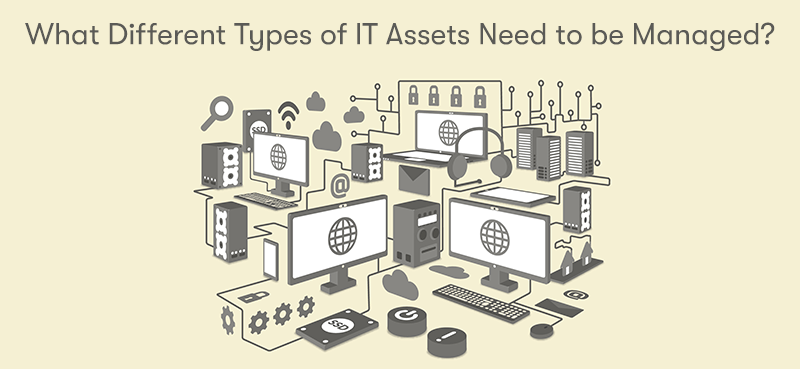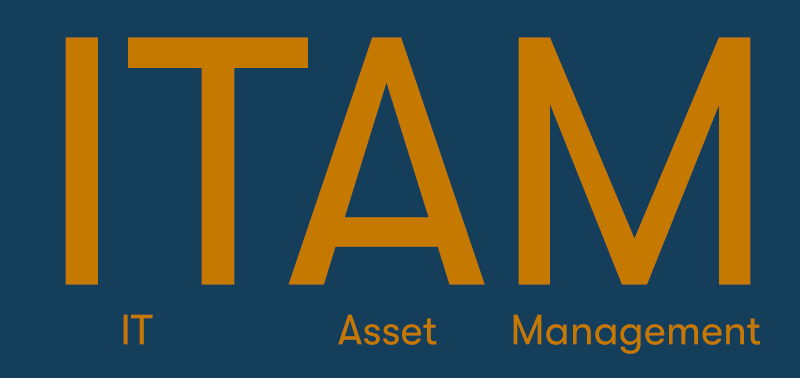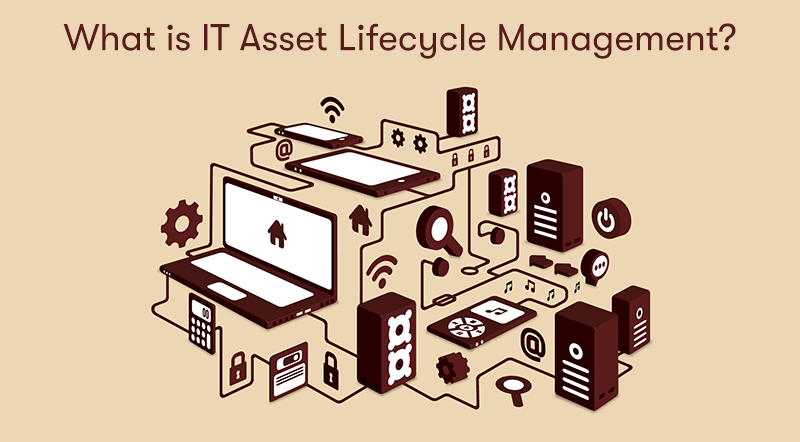What is IT Asset Lifecycle Management?
Welcome to our in-depth exploration of IT Asset Lifecycle Management—a cornerstone in the realm of modern business efficiency and technology optimisation. In today's rapidly evolving digital landscape, the strategic management of IT assets has become more crucial than ever.
IT Asset Lifecycle Management is not just a practice but a necessity, ensuring that every piece of technology in an organisation—from hardware to software, from procurement to disposal—is managed effectively and efficiently. This comprehensive approach maximises the value of IT investments and aligns them seamlessly with business objectives.
Through this discussion, we aim to unravel the complexities and highlight the importance of each stage in the lifecycle of IT assets, providing insights into why mastering this art is essential for any forward-thinking organisation.
What is IT Asset Lifecycle Management?
IT Asset Lifecycle Management is a comprehensive approach to managing the life of an information technology (IT) asset from its acquisition to its disposal.
IT Asset Lifecycle Management also involves keeping accurate records of assets, tracking their performance, and ensuring compliance with relevant laws and regulations. The goal is to maximise the value and efficiency of IT assets while minimising costs and risks associated with them.
What Are IT Assets?

IT assets, in the context of Information Technology, refer to any data, devices, or other resources that are used to manage and deliver information and technology services. These assets are integral to the functioning of an organisation's IT infrastructure. They can be broadly categorised into three main types:
Hardware Assets
This category includes all the physical components of an organisation's IT infrastructure. Examples include:
- Computers and laptops
- Servers and data storage devices
- Networking equipment like routers, switches, and firewalls
- Peripheral devices such as printers, scanners, and external drives
- Mobile devices like smartphones and tablets
Software Assets
Software assets comprise all the applications and systems that run on the hardware. This category includes:
- Operating systems (like Windows, macOS, Linux)
- Business applications (such as CRM systems, accounting software, and project management tools)
- Productivity software (like Microsoft Office, Adobe Creative Suite)
- Custom-developed applications specific to the organisation
- Cloud-based services and subscriptions
Digital Assets
These are the non-tangible assets, which include:
- Data stored by the organisation, including customer data, employee information, and proprietary business data
- Websites and their associated content
- Intellectual property such as patents, trademarks, and copyrights related to IT
- Software licenses and agreements
Managing these IT assets effectively is crucial for any organisation. It ensures that the IT infrastructure operates efficiently, supports the organisation's business goals, and provides a framework for strategic decision-making regarding technology investments and upgrades.
What Are the Stages of IT Asset Lifecycle Management?
IT Asset Lifecycle Management encompasses several key stages, each important for managing the lifespan and efficiency of IT assets effectively. These stages are:
1. Planning and Procurement
- Identifying the need for new IT assets based on business requirements.
- Budgeting for these assets.
- Researching and selecting the appropriate hardware, software, or services.
- Acquiring the assets through purchasing or leasing.
2. Deployment and Installation
- Installing and configuring hardware and software.
- Integrating new assets into the existing IT environment.
- Ensuring compatibility and minimal disruption to ongoing operations.
3. Operation and Use
- Daily management and utilisation of the IT assets.
- Monitor performance and ensure assets are used effectively.
- Providing support and training for users.
4. Maintenance and Upgrades
- Regular maintenance to ensure assets are functioning optimally.
- Applying software updates and patches.
- Upgrading assets as required to maintain efficiency and meet new business needs.
5. Decommissioning and Disposal
- Securely retiring assets that are no longer needed or have become obsolete.
- Safely disposing of or recycling hardware.
- Ensuring software licenses are terminated, and data is securely wiped or transferred.
Throughout these stages, effective asset tracking, performance monitoring, and lifecycle management strategies are employed to maximise the value derived from each asset. This management approach helps organisations control costs, reduce risks, and align IT resources with their overall business objectives.
What Different Types of IT Assets Need to be Managed?

In IT Asset Management, various types of assets need to be managed effectively. These can be broadly classified into the following categories:
Hardware Assets
This includes all physical devices and equipment, such as:
- Computers and laptops
- Servers and networking equipment (routers, switches, firewalls)
- Storage devices (hard drives, SSDs, NAS systems)
- Mobile devices (smartphones, tablets)
- Peripheral devices (printers, scanners, monitors)
Software Assets
These are the programs and applications used by an organisation, including:
- Operating systems (e.g., Windows, macOS, Linux)
- Application software (e.g., Microsoft Office, Adobe Creative Suite)
- Enterprise resource planning (ERP) and customer relationship management (CRM) systems
- Database management software
- Development tools and platforms
- Cloud-based services and applications
Digital Assets
This category covers digital content and resources, such as:
- Data and databases, including customer data, financial data, and operational data
- Websites and online content
- Digital media like videos, images, and audio files
- Intellectual property related to IT, such as patents or proprietary algorithms
Network Assets
These are the components that make up an organisation's network infrastructure, including:
- Routers and switches
- Wireless access points
- Firewall and security appliances
- Network cabling and physical infrastructure
Cloud Assets
With the increasing adoption of cloud computing, these assets are becoming more prevalent:
- Virtual machines and server instances in the cloud
- Cloud storage and databases
- Cloud-based applications and services
- Infrastructure as a Service (IaaS), Platform as a Service (PaaS), and Software as a Service (SaaS) subscriptions
License and Subscription Assets
These are the licenses and subscriptions for software and services, including:
- Software licenses and maintenance agreements
- Subscriptions for cloud services and SaaS products
- Warranties and support contracts for hardware and software
Each type of IT asset has its unique management requirements, including procurement, deployment, maintenance, and eventual disposal. Effective management of these assets helps ensure they are used efficiently, remain secure, and provide the best value to the organisation.
Why is Managing IT Asset Lifecycles so Important?

Managing IT asset lifecycles is crucial for several reasons, each playing a significant role in the overall health and efficiency of an organisation's IT environment:
Cost Management and Optimisation
Effective lifecycle management helps control costs by maximising the value of each asset. It ensures that investments are made wisely, assets are used efficiently, and upgrades, maintenance, and disposal expenses are optimised.
Improved Planning and Budgeting
Understanding the lifecycle stages of IT assets allows for better forecasting and budgeting. Organisations can plan for future investments, replacements, and upgrades more accurately, avoiding unnecessary expenditures or last-minute scrambles for resources.
Risk Reduction
Proper management of IT assets reduces risks related to security, compliance, and operational failures. Ensuring that assets are up to date with the latest security patches and compliant with legal and industry standards helps protect against data breaches and regulatory penalties.
Enhanced Performance and Reliability
Regular maintenance and timely upgrades ensure that IT assets perform optimally. This reliability supports business operations and contributes to overall productivity.
Asset Utilisation and Efficiency
Tracking and managing the use of IT assets ensures that resources are utilised effectively. It helps identify redundant or underperforming assets that can be repurposed or retired.
Data Security and Compliance
Properly managing the lifecycle of IT assets, especially during disposal, is critical for data security. Securely erasing data from devices and adhering to compliance requirements for data handling protects sensitive information.
Environmental Responsibility
Responsible disposal and recycling of IT assets at the end of their lifecycle is essential for environmental sustainability. It ensures that e-waste is handled in an eco-friendly manner.
Support for Business Strategy
Aligning IT asset management with business goals supports strategic initiatives. It ensures that the IT infrastructure is capable of supporting current and future business needs.
In summary, effective IT asset lifecycle management is integral to financial health, operational efficiency, risk management, and strategic alignment in organisations. It not only helps in optimising the use of technology resources but also plays a key role in the broader context of organisational success and sustainability.
What Are Some Best Practices for this Type of Management?
Implementing best practices in IT Asset Lifecycle Management is crucial for maximising the efficiency, value, and lifespan of IT assets. Here are some key best practices:
Comprehensive Inventory Management
Maintain an up-to-date inventory of all IT assets. This includes not just hardware but also software licenses, cloud resources, and digital assets. A central inventory system helps track the status, location, and condition of each asset.
Standardisation of Assets
Where possible, standardise IT assets across the organisation. This simplifies maintenance, reduces support complexity, and can lead to bulk purchasing discounts.
Lifecycle Planning
Plan for each stage of the asset's life, from procurement to disposal. Understand the expected lifespan of assets and plan for upgrades and replacements in advance.
Proactive Maintenance
Implement a regular maintenance schedule for IT assets to ensure they are operating efficiently and to prevent unexpected failures.
License and Compliance Management
Review and manage software licenses and subscriptions regularly to avoid legal issues and ensure compliance with licensing terms. This also helps avoid over-licensing and under-licensing.
Vendor Management
Establish good relationships with vendors, understand their product lifecycles, and support end dates. This can help in negotiating better terms and understanding when to plan for asset replacements.
Effective Disposal Practices
Implement secure and environmentally responsible disposal practices for IT assets. This includes data wiping, recycling, and considering options for donating or reselling equipment.
Regular Audits and Reviews
Conduct regular audits to ensure that IT assets are being used effectively and to identify opportunities for optimisation. This includes reviewing the performance, usage, and costs associated with the assets.
Integrate ITAM with Other Business Processes
IT asset management should not operate in a silo. Integrate it with other business processes like finance, procurement, and risk management to ensure alignment with broader business objectives.
Utilise ITAM Software and Tools
Leverage IT asset management software and tools for efficient tracking, management, and reporting. These tools can automate many aspects of ITAM, provide valuable insights, and improve decision-making.
Training and Awareness
Ensure that staff are trained and aware of the importance of IT asset management. Educating users on the proper use and care of IT assets can reduce risks and improve the overall effectiveness of ITAM practices.
Data Security and Privacy
Ensure that ITAM practices adhere to data security and privacy standards, especially when disposing of or repurposing assets that contain sensitive data.
By following these best practices, organisations can ensure that their IT assets are managed efficiently throughout their lifecycle, leading to cost savings, improved performance, and alignment with business goals.
How Does IT Asset Management Lifecycle Relate to ITAM?

IT Asset Management is an integral part of the IT Asset Lifecycle Management process. Essentially, ITAM encompasses the practices, strategies, and tools used to manage IT assets throughout their lifecycle. Here's how ITAM relates to the IT Asset Lifecycle Management:
Foundational Framework
ITAM provides the foundational framework for managing IT assets from procurement to disposal. It involves processes and policies that guide how IT assets are acquired, deployed, managed, and retired.
Lifecycle Management
ITAM is not just about tracking assets; it's about managing them through each phase of their lifecycle. This includes planning, procurement, deployment, operation, maintenance, and disposal. ITAM ensures that each phase is handled efficiently and effectively.
Strategic Alignment
ITAM aligns IT assets with business objectives. It ensures that assets support the organisation's strategic goals, whether that's improving productivity, reducing costs, or facilitating growth and innovation.
Cost Management
ITAM plays a crucial role in controlling costs throughout the asset's lifecycle. By effectively managing assets, organisations can avoid unnecessary purchases, reduce maintenance costs, and ensure assets are utilised to their full potential.
Risk Management
Through ITAM, organisations can mitigate risks associated with IT assets. This includes managing compliance with licenses, ensuring security updates are applied, and properly disposing of assets to protect sensitive data.
Optimisation and Efficiency
ITAM practices help optimise the use of IT assets, ensuring they are not under or over-utilised. This optimisation leads to greater efficiency in the IT environment.
Data-Driven Decisions
ITAM provides the data and insights necessary for making informed decisions about IT assets. This includes understanding the total cost of ownership, the performance of assets, and when they should be replaced or upgraded.
Integration with Other IT Processes
ITAM is closely linked with other IT management processes, such as IT Service Management (ITSM) and IT Security Management. This integration ensures a holistic approach to managing IT resources and services.
In summary, IT Asset Management Lifecycle is a component of ITAM, focusing specifically on the stages an asset passes during its time in an organisation. ITAM, meanwhile, encompasses a broader set of practices and strategies that oversee these lifecycle stages, ensuring that IT assets are managed in a way that supports the organisation's overall objectives and needs.
Final Notes on IT Asset Management Lifecycle
In conclusion, our exploration of IT Asset Lifecycle Management and ITAM has underscored their pivotal role in modern organisational structures. We delved into the various types of IT assets, including hardware, software, and digital assets, and examined the critical stages of their lifecycle. The importance of managing these lifecycles is manifold, encompassing cost optimisation, risk reduction, and enhanced operational efficiency.
Implementing best practices in ITAM ensures these assets align with strategic business goals, fostering a harmonious and productive IT environment. As we've seen, ITAM is not merely about tracking assets but strategically managing them from procurement to disposal, integral to the overarching framework of IT governance. This comprehensive understanding is key to navigating the complex, ever-evolving landscape of information technology.


